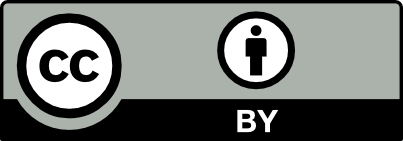
Module 1: Practicing media literacy

Aim of the module
This learning module is designed to equip educators with a broad set of essential media literacy skills, enabling them to effectively teach young learners how to understand, analyse, and engage with different forms of media. It promotes the development of critical thinking and analytical skills, empowering trainers to help students navigate media in a responsible and informed manner.
Learning outcomes
Upon completion of this module, learners will have gained the following knowledge and skills:
Knowledge
- Understanding Media Sources:
- Knowledge of various types of media sources, including traditional media, social media, and online platforms.
- Awareness of the credibility and reliability of different media sources.
- Media Manipulation Techniques:
- Understanding common techniques used to manipulate media content, such as framing, sensationalism, and selective editing.
- Knowledge of the motives behind media manipulation, including political, commercial, and ideological agendas.
- Media Literacy Frameworks:
- Familiarity with established media literacy frameworks and models (e.g., CARS checklist, SIFT method).
- Understanding key concepts in media literacy, such as bias, misinformation, and propaganda.
Skills:
- Critical Evaluation:
- Ability to critically analyse media content for accuracy, bias, and credibility.
- Skill in identifying misleading or deceptive elements in media messages.
- Information Verification:
- Competence in verifying information from multiple sources and cross-referencing information to assess its reliability.
- Skill in fact-checking and using fact-checking tools and resources effectively.
- Media Literacy Application:
- Applying media literacy principles and strategies in real-world contexts, including social media, news articles, and advertising.
- Skill in recognising and resisting media manipulation tactics in everyday media consumption.
List of Topics
This topic explores the variety of media sources available, including traditional and digital platforms, and explains how to assess their credibility.
This topic provides insight into common techniques used to manipulate media content and the underlying motives driving such practices.
This topic fosters skills to critically evaluate media messages and apply media literacy principles in everyday situations.
Objective, Key Concepts, Skills to Develop
By the end of this module, you will be able to:
- Distinguish different types of media sources and their credibility.
- Identify techniques of media manipulation, including framing and sensationalism.
- Use media literacy frameworks to guide analysis.
- Evaluate information critically.
- Apply practical media literacy strategies in real-life contexts.
Guide for Learning
To make the most of this module, begin by deepening your understanding of different types of media and learning how to assess their credibility. Then, explore common manipulation techniques using real-world examples, and practise applying critical evaluation frameworks to analyse media content effectively.
Enhance your learning by engaging in discussions and collaborative activities, exploring the recommended resources for further insight, and reflecting after each section on how to put your new knowledge into practice.
Motivating Case Study
Imagine a young learner named Alex, who comes across a viral video claiming that a local celebrity is involved in a shocking scandal. Without questioning its authenticity, Alex shares the video with friends, sparking rumours throughout the school. Later, it turns out that the video was heavily edited and taken out of context. This incident highlights the importance of media literacy in today’s digital age, where information spreads rapidly and can easily be misinterpreted.
Through this training module, trainers will learn how to empower students like Alex to question the credibility of information, recognise manipulation tactics, and think critically before sharing. Equipped with these skills, young learners will become informed consumers of media, capable of navigating the online world responsibly and contributing positively to their communities.
This story highlights the urgent need for media literacy education.
Reflection questions to open a discussion between peers:
Q1. What steps could Alex have taken to verify the authenticity of the video before sharing it?
Q2. What are the potential consequences – both personal and societal – of spreading misinformation online?
Q3. How can educators help young people develop critical thinking skills to recognise and challenge manipulated content?

Topic 1 – Understanding Media Sources
In this section, we explore the landscape of media sources, which can generally be categorised into two main groups: traditional media and digital media.
This includes newspapers, magazines, radio, and television. Traditional media have historically been viewed as more credible due to editorial standards and journalistic ethics. Traditional media often undergoes rigorous processes of fact-checking and validation before publication. However, readers should still approach these sources with a critical eye, as biases can exist depending on ownership and editorial slant.
This encompasses social media platforms (such as Facebook, Twitter, and Instagram), blogs, podcasts, and online news websites. Digital media allows for the rapid spread of information, but often lacks the editorial checks that traditional media typically have. While these platforms provide a means for a broader range of voices, they also increase the risk of misinformation, as anyone can publish content without substantial oversight.
Assessing Credibility
Understanding the distinction between these two media types is just the beginning. Assessing their credibility requires a systematic approach. Here are the key factors to consider:
Investigate who created the content. Are they an established journalist, a specialist in the field, or an anonymous source? Credible sources typically have identifiable contributors with relevant expertise.
The relevance of information can change over time. Always check if the content is up-to-date, especially in fast-moving topics like health, politics, or technology.
Familiarise yourself with the source’s reputation. Established organisations often have rigorous editorial standards. Be cautious of sources with a history of sensationalism or inaccuracy.
Credible articles usually reference other reliable sources or studies. Check if the claims are backed by evidence from reputable organisations or experts.
Evaluate whether the content presents a balanced view or exhibits bias. Recognising the tone, language, and perspective can help identify any underlying agendas.
Examples
To illustrate the assessment process, consider the example of a health-related claim found in a popular blog versus a peer-reviewed journal article. The blog might use dramatic language to promote a supposed miracle cure, but it lacks citations. In contrast, the journal article, written by medical professionals and published in a reputable journal, presents findings from a well-structured study. By assessing these sources critically, learners can distinguish between credible information and sensationalist claims.
Resources
BBC’s “How to Spot Fake News”: These two guides offer practical tips on assessing media sources and identifying misinformation.
- https://learnenglish.britishcouncil.org/skills/reading/b1-reading/how-spot-fake-news
- www.youtube.com/watch?v=p3NaMEYs04M
MC-VIEW: This Erasmus+ project focuses on increasing media literacy by promoting critical viewing through an online learning platform..

Activity
Task: Choose a current news story from various media sources (e.g., a traditional newspaper, a popular online platform, and social media). For each source, apply the credibility assessment criteria mentioned above.
- Identify the authorship of each piece. Who wrote it? What are their qualifications?
- Check the publication date. Is it recent? Does the date affect the relevance of the information?
- Research the reputation of the publication. Is it known for quality journalism?
- Look for supporting citations and references. Are claims backed by reliable evidence?
- Assess bias. Does the piece seem objective, or does it promote a specific agenda?
In small groups, discuss your findings and share your evaluations. This activity fosters critical thinking and discussion among learners, reinforcing the importance of understanding media sources.

Topic 2 – Media Manipulation Techniques
Understanding Techniques
In this section, we delve into the various techniques used to manipulate media content. Understanding these tactics is crucial for learners to recognise how information can be skewed and misrepresented. Commonly used techniques are:
This refers to the way information is presented in order to influence perception. By emphasising certain aspects of a story while downplaying others, creators can shape how audiences interpret the information. For instance, coverage of a protest might frame it as a “violent uprising” versus a “peaceful demonstration,” leading to different public reactions.
Sensationalism involves exaggerating or highlighting shocking aspects of a story to attract attention. This technique is often used in tabloid journalism, where headlines may suggest drastic claims. While sensationalist stories can generate clicks and views, they often sacrifice accuracy for entertainment, leading to distorted perceptions of reality.
This technique involves editing audio or video content to mislead viewers. A common example is taking quotes out of context, where a speaker’s words might be used to convey a completely different meaning than intended. For example, an edited interview clip might portray someone as endorsing a controversial opinion when, in reality, they were being critical of it.
Propaganda is information, often biased or misleading, used to promote a political cause or point of view. It can take many forms and can be disseminated through various media, including advertorials, political ads, and social media campaigns. Recognising propaganda is vital to understanding how narratives can be crafted to influence public opinion.
- Misinformation is false or misleading information spread without harmful intent, often due to misunderstanding or misinterpretation.
- Disinformation, on the other hand, is deliberately misleading information shared with the intent to deceive, often for political or financial gain. Both forms contribute to the erosion of trust in the media.
Motives for Manipulation
Common motives behind media manipulation include:
Media outlets might favour particular political viewpoints, impacting how information is presented. This can lead to biased reporting that serves specific interests rather than the public good.
Advertisers often influence how stories are reported. For instance, a publication might downplay negative news about a company that advertises with them to maintain a positive relationship.
Different media outlets may have inherent biases based on their ownership or editorial direction. Recognising these biases helps learners critically evaluate the information they consume.
Examples
To illustrate these concepts, consider a news segment on climate change. A segment might frame human activity as the primary cause while presenting counterarguments from climate change deniers without critique. This selective editing fosters misunderstanding. Another example could be a sensationalist headline claiming, “Catastrophic floods incoming!” which may provoke panic rather than provide context about climate trends.
Resources
How disinformation works: This video explores how to spot and counter disinformation.
Protect yourself from disinformation: This page provides tips and resources to help you avoid falling for disinformation and unintentionally spreading it.
Guidelines for educators on tackling disinformation and promoting digital literacy through education and training

Common motives behind media manipulation include:
Activity
Task: Choose an article or video from a news outlet known for sensationalism or bias and identify the manipulation techniques used.
Steps:
- Framing: Note how the author presents the situation. What details are emphasised or downplayed?
- Sensationalism: Examine the language used in headlines and body text. Is it exaggerated or dramatic?
- Selective Editing: If video content is used, assess how quotes or visuals might have been altered to mislead.
- Motives: Discuss the potential motives behind the manipulation. Who benefits from this portrayal?
In groups, share your analysis, discussing how recognising these techniques can shape a more informed response to what you consume and share.

Topic 3 – Critical Evaluation and Application
Critical Analysis Skills
This section focuses on the essential skill of evaluating media content critically, which involves a systematic approach to analysing information, allowing learners to discern between credible sources and misinformation. Key steps for effective critical analysis are as follows:
Encourage learners to ask fundamental questions about the media they consume. Who created the content? What is its purpose? What evidence supports the claims being made? This inquisitive mindset lays the foundation for deeper analysis.
Factors such as timing, geographical location, and cultural background can affect how a story is reported and perceived. Learners should consider these contextual elements when evaluating media messages.
Teach learners the difference between binary thinking (seeing information as strictly “right” or “wrong”) and critical thinking (embracing nuance and complexity). Real-world issues involve multiple perspectives and being able to understand this is essential for informed decision-making.
Using Frameworks
To facilitate critical evaluation when evaluating media content you can adopt established media literacy frameworks/practical tools. In this topic we present two of them; the CARS checklist and the SIFT method.
CARS checklist: This acronym stands for Credibility, Accuracy, Reasonableness, and Support:
- Credibility: Is the source reputable? What are the credentials of the author?
- Accuracy: Are the facts presented verifiable? Is there evidence to support the claims?
- Reasonableness: Is the tone objective and fair? Are alternative perspectives considered?
- Support: Is the content backed by reliable references, citations, and sources?
SIFT method: The SIFT method encourages learners to:
- Stop: Pause and verify the information before sharing it.
- Investigate: Look into the source and its credibility.
- Find better coverage: Seek additional perspectives from credible sources.
- Trace claims: Follow the trail of evidence to understand the context.
Real-world Application
After understanding the evaluation techniques, learners can apply these skills in everyday situations. From social media posts to news articles and advertisements, critical evaluation can be practised in various contexts. Some scenarios are:
Encourage students to approach viral posts with scepticism. Before sharing, they should assess the source and verify the credibility of the claim.
When reading news reports, students can use the CARS/SIFT checklist to critically assess the information presented and understand any inherent biases.
Teach learners to evaluate advertisements critically, discerning between informative content and persuasive tactics designed to manipulate emotions or perceptions.
Examples
Consider a recent news article about a health claim regarding a new dietary supplement. Using the CARS/SIFT checklist, learners can uncover issues with the credibility of the source, such as a lack of expertise in nutrition and the absence of peer-reviewed studies. This allows learners to recognise flawed arguments.

Common motives behind media manipulation include:
Resources
EUfactcheck.eu: This site fights misinformation about European policies and topics. Journalism students from all over Europe factcheck claims made by politicians and others and rate them.
Vera.ai: This is an European research and development project focusing on disinformation analysis and AI supported verification tools and services.
Activity
Task: Conduct a critical evaluation of a current news article using the CARS checklist or SIFT method.
Steps:
- Choose a news article from various sources.
- Evaluate it using the CARS checklist: Assess the credibility of the source, check for accuracy and look for reasonable arguments supported by evidence.
- Use the SIFT technique by stopping to verify facts before sharing, investigating the source, finding better coverage, and tracing claims back to their origins.
In groups, present your findings and discuss how these critical evaluation skills can help learners make informed decisions and better navigate the media landscape. Encourage dialogue about the importance of these skills in promoting responsible media consumption.
Module Summary
In an era where misinformation abounds, fostering media literacy among young learners is essential.
This module provides trainers with the tools to equip students with the skills needed to critically evaluate media content, understand manipulation techniques, and apply media literacy principles in their daily lives.
Becoming informed and discerning media consumers, trainers can shape a generation capable of navigating the complexities of the media landscape responsibly.
With practical activities, engaging resources, and a focus on real-world application, this training enhances educators’ competences in delivering meaningful media literacy education.
Through this training module, trainers will learn how to empower students like Alex to question the credibility of information, recognise manipulation tactics, and think critically before sharing. Equipped with these skills, young learners will become informed consumers of media, capable of navigating the online world responsibly and contributing positively to their communities.
This story highlights the urgent need for media literacy education.
Module 1: Quiz
Glossary of terms
The different forms and channels through which information is disseminated to the public. This includes traditional media (such as newspapers, radio and television) and digital media (such as social media platforms, blogs and online news websites). Each type has its own characteristics, credibility standards and audience engagement methods.
Strategies employed to influence or distort the presentation and perception of information. Common techniques include framing (shaping how news is presented), sensationalism (exaggerating elements to attract attention), selective editing (misleading through altered context), and the use of misinformation or disinformation (spreading false or misleading content intentionally or unintentionally).
Analysing information to assess its credibility, accuracy, and reliability. This process includes scrutinising the authorship, publication date, source reputation, evidence provided, and potential biases, enabling individuals to make informed judgments about the content they consume and share.
Bibliography and references


Funded by the European Union. Views and opinions expressed are however those of the author(s) only and do not necessarily reflect those of the European Union or the European Education and Culture Executive Agency (EACEA). Neither the European Union nor EACEA can be held responsible for them. Project number: 2023-1-NO01-KA220-ADU-
